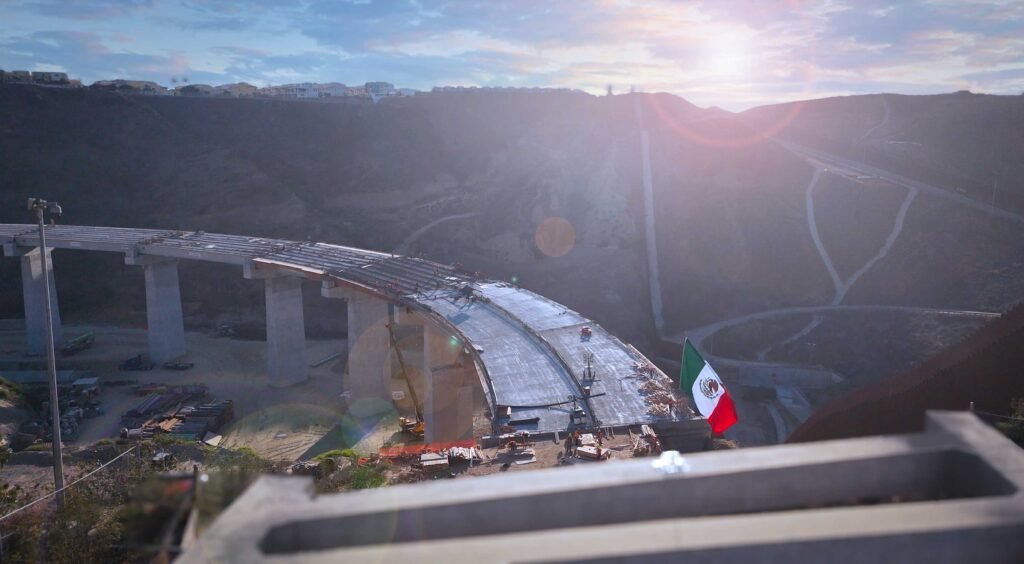Tijuana’s sky-high road project is nearly finished—91% complete, to be exact. But it comes with a twist: the elevated viaduct will no longer reach Playas de Tijuana as originally planned.
Wait… It Doesn’t Go to the Beach Anymore?
Correct. The project will now end at Cañón del Matadero, cutting out the final 1.5 kilometers that would have taken drivers straight into Playas. That change reshapes traffic expectations, especially for locals who were counting on a smooth, direct bypass.
The Big Picture: Still a Game-Changer
Stretching about 10.5 kilometers in total (before the trim), the viaduct offers more than 6.5 km of elevated lanes. It’s designed to connect the Otay area to the western side of the city, avoiding the slow grind through downtown. This should dramatically reduce drive times for commuters, airport travelers, and anyone who dreads the Vía Rápida crawl.
Construction is in the hands of SEDENA, Mexico’s military engineers. And they’ve moved fast. Columns, beams, and the primary structure are in place. What’s left? Paving, ramps, signage, and final safety tests.
Officials still expect it to open by late 2025 or early 2026.
Toll Booths? Not Here
Let’s settle this once and for all: no tolls. That rumor’s been dead since 2024—when the president shut it down. We covered it. You’re welcome.. No concessions, no surprise fees, no “express lane” pricing. This road is funded by the federal government and built for public use.
The materials? All made in Mexico. That means no tariff drama, no import delays, and fewer budget headaches.
It’s one of the few roads where you won’t have to pay in time, tolls, or sanity.
Viral Collapse Video? Nope.
You may have seen the clip floating around social media—a structure buckling, people gasping, dramatic captions. The rumors? False. The viaduct didn’t collapse.
That viral video? It captured a crane collapse during a concrete pour—not a structural failure. The columns didn’t flinch, the platform stayed put, and no one was hurt. Big projects like this come with big equipment, and sometimes that equipment fails. But the viaduct? Still standing. Still solid.
Traffic Fallout for Locals?
The rerouted design raises concerns for residents near Soler and El Mirador. With the project ending short of Playas, local streets could take the hit, absorbing diverted traffic that was meant to glide over them.
City officials haven’t offered a full traffic mitigation plan yet. So while the viaduct solves some problems, it may create others. As usual, it’s complicated.
Is It Still a Win?
Yes. Even trimmed down, this elevated route will shave time off daily commutes and keep cars out of the urban bottleneck. You’ll still get faster access from the airport and major corridors.
Just don’t expect to coast all the way to the malecón. You’ll need to finish that leg the old-fashioned way—through city streets and with a little patience.
Final Thoughts
At 91%, this mega-project is almost ready. With SEDENA at the helm, federal funds backing it, and local steel holding it together, it’s one of the most ambitious infrastructure efforts in recent Baja history.
So what do you think?
Still excited about Tijuana’s sky highway—even if it makes a slightly earlier exit?
🛣️ Watch the updated video and see for yourself.
📰 Gringo Gazette North – No Bad News



It is still very unclear if you are traveling to or from Rosarito area heading to the San Ysidro border (let’s say Sentri) how this whole thing works and which way you go.